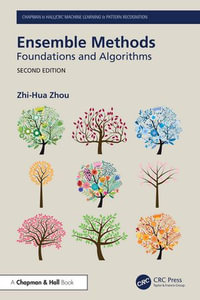
eTEXT
At a Glance
eText
$89.09
Instant online reading in your Booktopia eTextbook Library *
Read online on
Not downloadable to your eReader or an app
Why choose an eTextbook?
Instant Access *
Purchase and read your book immediately
Read Aloud
Listen and follow along as Bookshelf reads to you
Study Tools
Built-in study tools like highlights and more
* eTextbooks are not downloadable to your eReader or an app and can be accessed via web browsers only. You must be connected to the internet and have no technical issues with your device or browser that could prevent the eTextbook from operating.
This book is about doing microeconometrics, defined by Cameron and Trivedi as "the analysis of individual-level data on the economic behavior of individuals or firms using regression methods applied to cross-section and panel data" with R. Microeconometrics became increasingly popular in the last decades, thanks to the availability of many individual data sets and to the development of computer performance.
R appeared in the late nineties as a clone of S. It became increasingly popular among statisticians, especially in fields where S was widely used. Twenty years ago, using R for doing econometrics analysis required a lot of programming because a lot of core methods of econometrics were not available in R. Nowadays, most of the basic methods described in the book are available in contributed packages. Moreover, the set of packages called the tidyverse developed by RStudio (now Posit) for all the basic tasks of an applied statistician (importing, tidying, transforming and visualizing data sets) makes the use of R faster and easier. The book uses extensively specialized econometrics packages and the tidyverse, and it seeks to demonstrate that the adoption of R as the primary software for an econometrician is a relevant choice.
The first part of the book is devoted to the ordinary least squares estimator. Matrix algebra is progressively introduced in this part, and special attention is paid to the interpretation of the estimated coefficients. The second part goes beyond the basic OLS estimator by testing the hypothesis on which this estimator is based and providing more complex estimators relevant when some of these hypotheses are violated. Finally, the third part of the book presents specific estimators devoted to "special" responses, e.g., count, binomial or duration data.
Key Features:
- Many applications using data sets of recent academic works are developed
- Testing and estimation procedures using the programming framework of R and specialized packages are presented
- Two companion packages (micsr and micsr.data), containing respectively functions implementing some estimation and testing procedures not available in other contributed packages and data sets used in the book, are provided
Read online on
ISBN: 9781040298244
ISBN-10: 1040298249
Series: Chapman & Hall/CRC The R Series
Published: 14th February 2025
Format: ePUB
Language: English
Publisher: Taylor & Francis
Edition Number: 1























